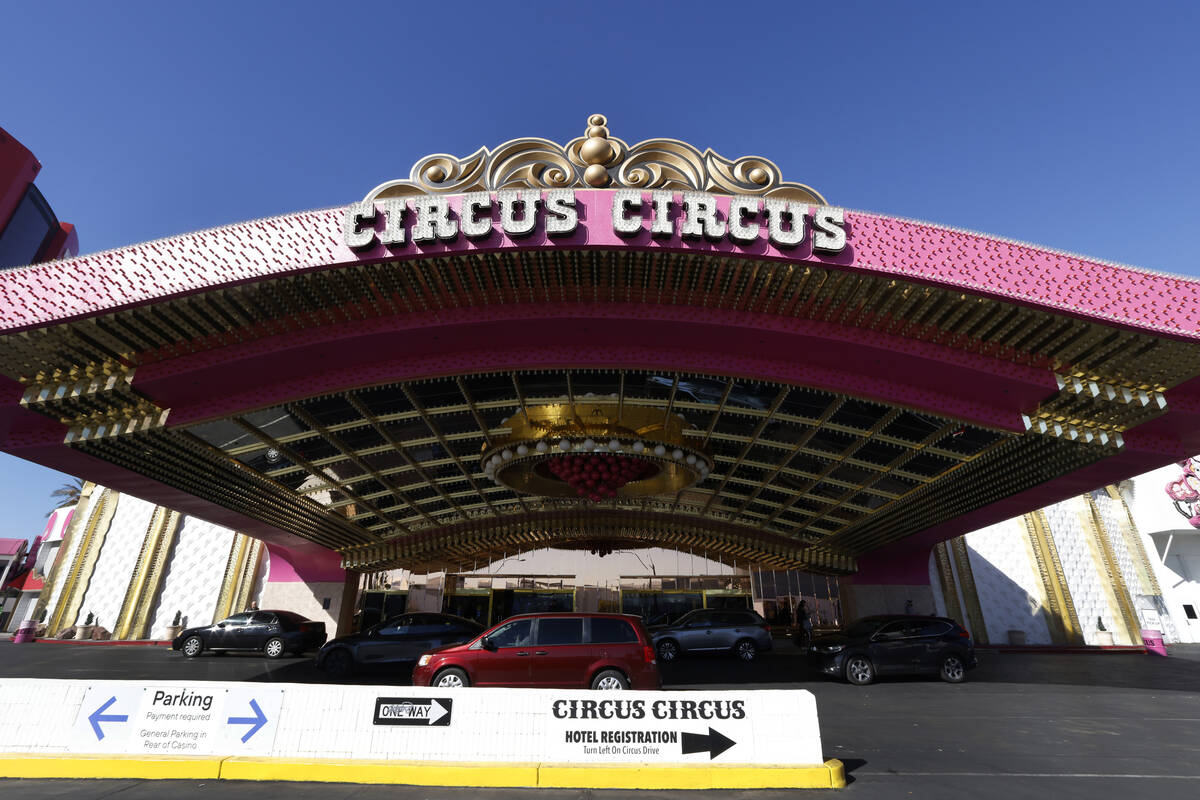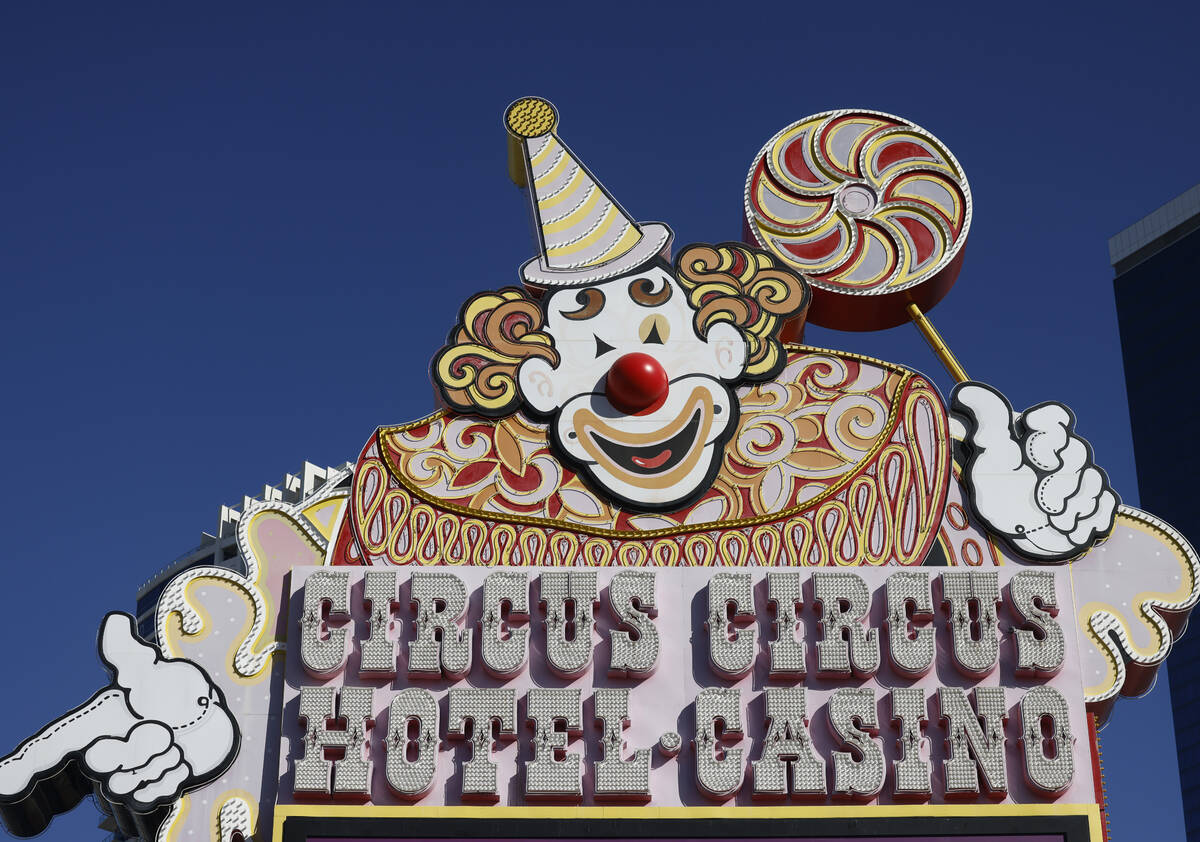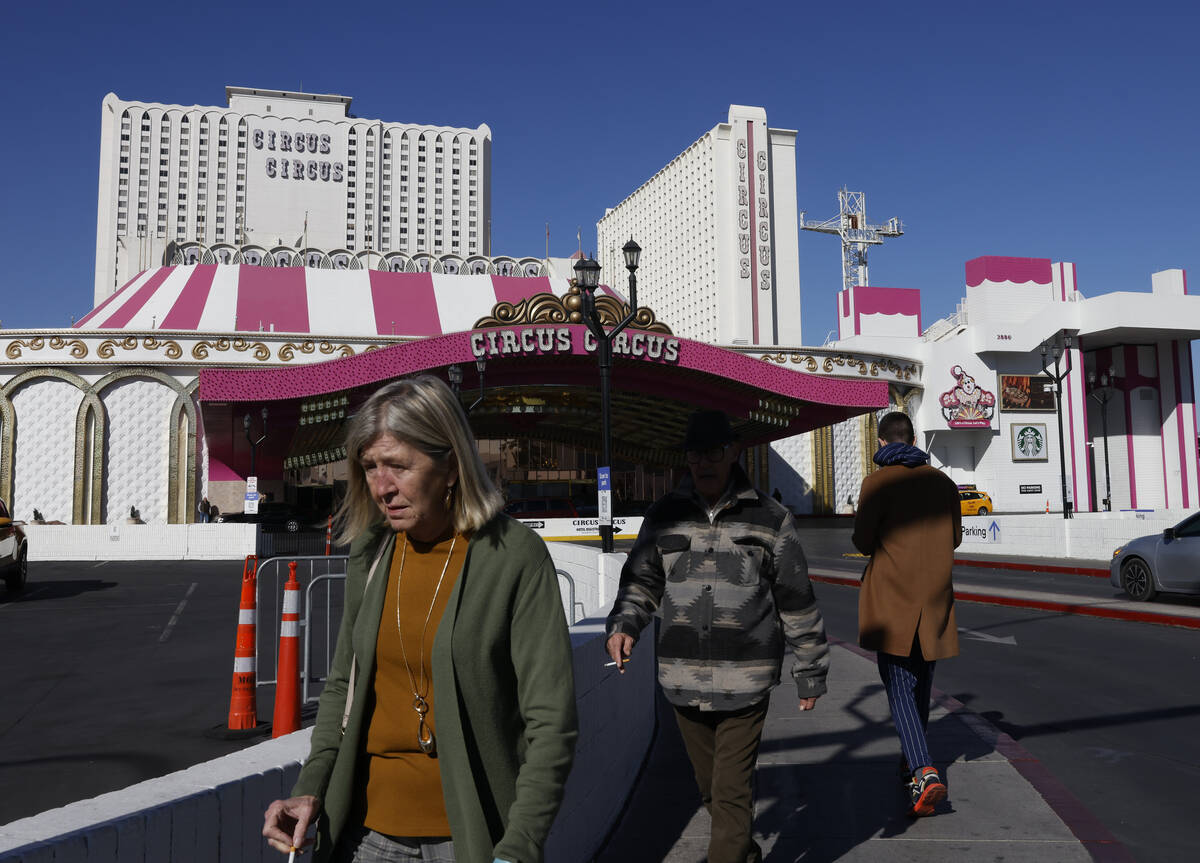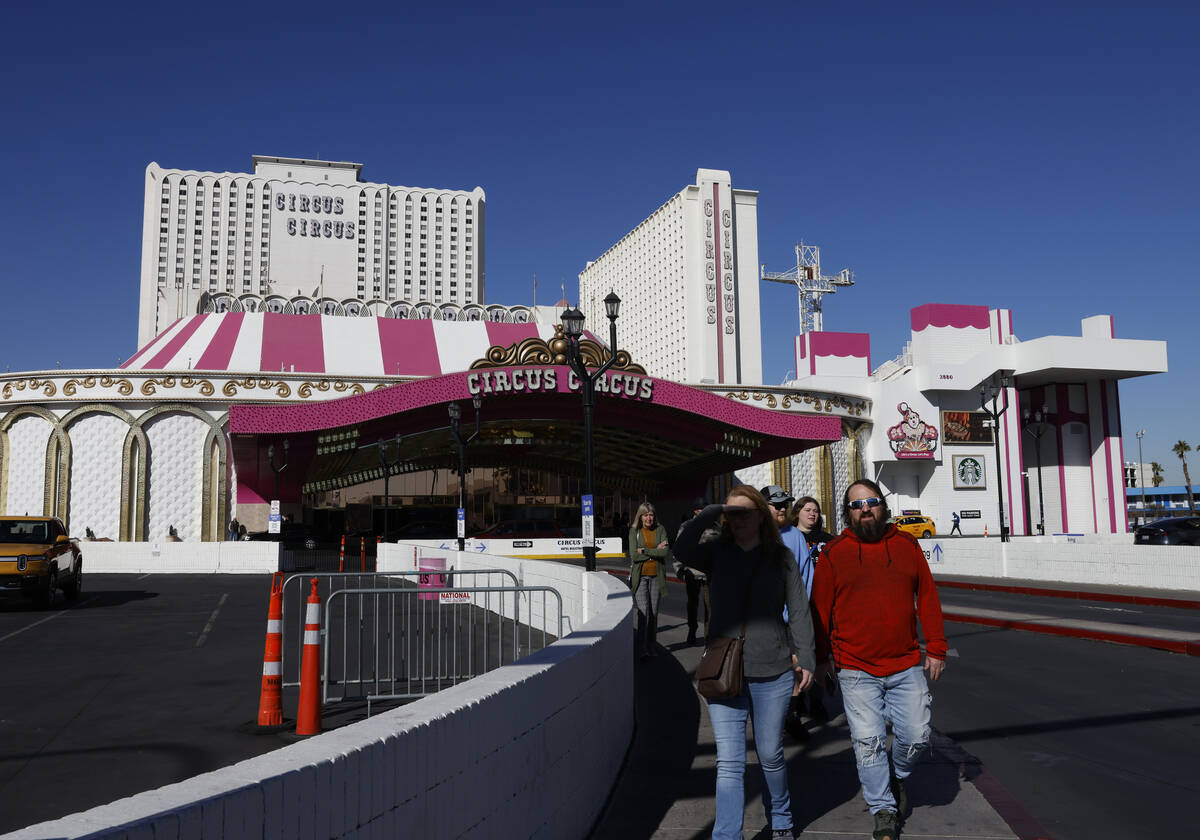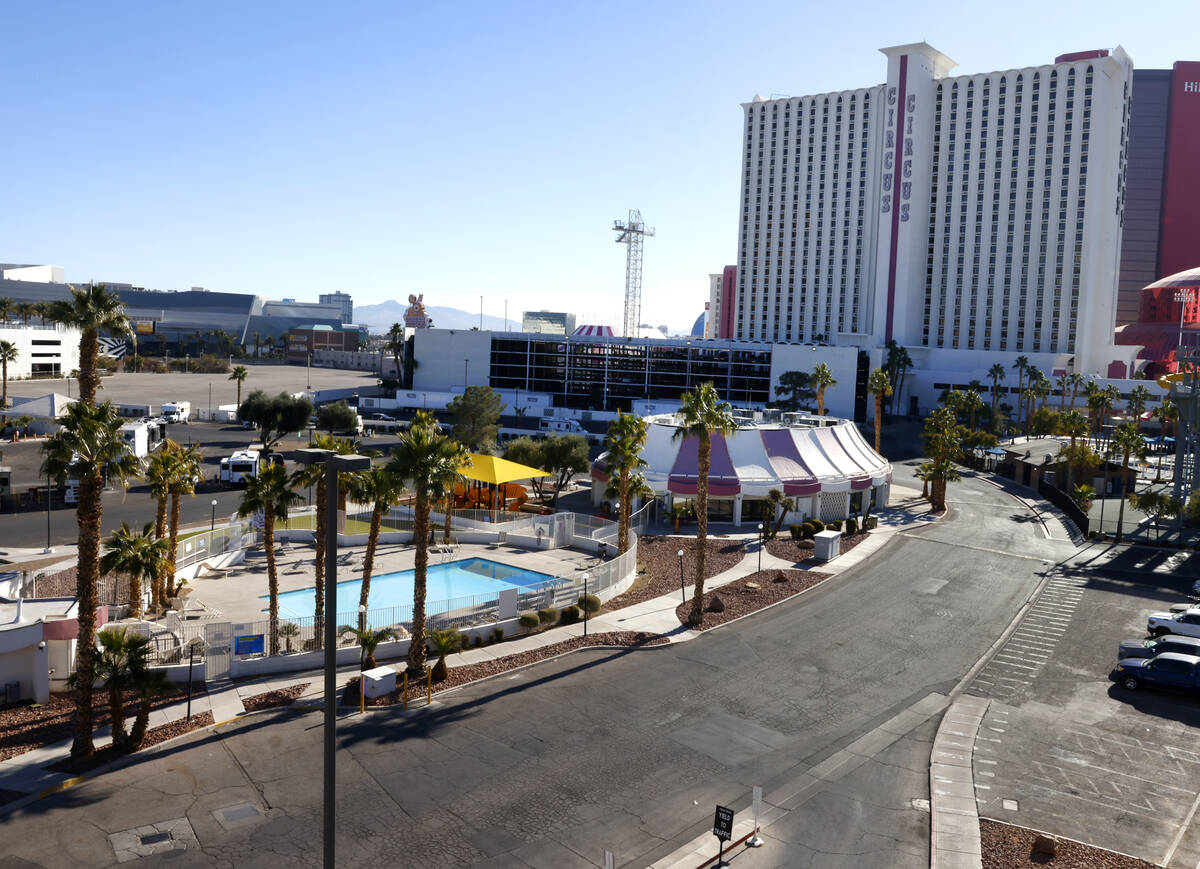What would happen to Circus Circus if Ruffin decides to sell it?
If Circus Circus, the iconic north Strip casino, is sold by gaming entrepreneur Phil Ruffin, what could take its place?
That is one of the many questions that erupted last week when Ruffin disclosed that he’s contemplating the sale of the 3,767-room hotel-casino – the 10th largest in Las Vegas and 18th largest in the world.
Ruffin has admitted all along that it’s the 102 acres adjacent to the property that presents an opportunity to sell it all for $5 billion and provide him with enough cash to buy another resort, possibly in Las Vegas.
“This iconic property has been part of the mythos of Las Vegas, from its appearance in ‘Diamonds are Forever’ to the thousands of local children who have grown up going there on field trips,” said Amanda Bellarmino, an assistant professor at UNLV’s William F. Harrah College of Hospitality.
“I sincerely hope that if it is sold, it will be maintained,” she said. “The price tag seems a bit high for the property, but the land adjacent to it is a prime spot that can be developed.”
Luxury development?
But another industry analyst, Josh Swissman, founding partner and managing director of the Las Vegas-based GMA Consulting, said in order for a $5 billion deal to pencil out for an investor, an ultra-luxury development would have to be built there. Circus Circus is far from that.
“At $50 million an acre, you’d be hard-pressed to build anything besides a luxury offering,” Swissman said. “So whatever the design is, it’s got to be upper end in terms of the price scale. And that sometimes makes it hard to have a family-oriented facility. There are a lot of people who think that the days for entities like that have come and gone.”
Circus Circus was a controversial themed resort since the day it opened in 1968 after being built by Jay Sarno, the man behind Caesars Palace. It took time for Circus Circus to find its financial footing, teetering on bankruptcy in its early years. The property’s next owner, William Bennett, said the property had turned into the city’s babysitter with an abundance of children milling around the resort and it was widely understood that kids and gambling aren’t a good mix.
But the property was enough of a cash cow that MGM Resorts International, then known as MGM Mirage, acquired Circus parent company Mandalay Resort Group in 2005 and kept Circus Circus in its portfolio.
By the time Ruffin, who did not comment for this story, bought it from MGM in 2019 for $825 million, Circus Circus was well established as a family-friendly property heavily favored by Hispanic customers as well as a dormitory facility for discount-seeking customers coming to Las Vegas for all kinds of conventions, trade shows and other special events around town.
Analysts watching the Circus Circus drama unfold say there are several possibilities for what’s next for the property and the north Strip.
How about a studio?
“As we continue to see our city evolve, there is more potential for that plot of land than ever before,” Belarmino said. “Could it be used for (Formula One) or for an NBA arena? Dare I say, this could be a location for a movie studio. Whatever may happen, there is a lot of potential for a transformation at that end of the Strip.”
Swissman, when mentioning the prospect of an ultra-luxury property, noted that most of the big players already have luxury resorts along the Strip with varying degrees of success and the competition is intense.
Would Wynn Resorts Ltd., a north Strip neighbor that is successful with Wynn Las Vegas and Encore Las Vegas and has a cache of vacant land across the street from its resorts, have any interest? Caesars Entertainment has Caesars Palace farther south on the Strip. MGM has Bellagio, Aria, the Cosmopolitan of Las Vegas and nongaming Vdara in its portfolio.
And just because a resort is deemed “ultra-luxury” doesn’t always assure success. Year-old Fontainebleau Las Vegas, which has tried to bring its South Beach vibe to the Strip and is privately held, reportedly has struggled financially. The parent company of Resorts World Las Vegas, which looked to take advantage of its connections with Asian gamblers and its relationship with Hilton, announced in December that it had its worst financial quarter in two years.
Database is critical
Macquerie Group Ltd. gaming analyst Chad Beynon said the struggles exemplify the importance of having a robust casino database.
“Ultra-luxury works on the Strip, given the hotel rates, Michelin-rated restaurant prices and retail sales performance,” Beynon said in an interview. “However, the lack of financial success of the Fontainebleau continues to beg the question of if an operator can do it without a solid casino database.”
Two companies with a stake in the success of the north Strip had no comment about prospects for Circus Circus. Representatives of LVXP, a team of Las Vegas-based real estate professionals that hopes to build a 752-foot, 2,605-unit hotel and condominium project with an 18,000-seat arena and a 6,000-seat theater on land between the Sahara and Fontainebleau, and for BPS Partners LLC, which plan a mixed-use attraction featuring two 600-foot towers and a 439-foot amusement ride at Las Vegas and Elvis Presley boulevards, had no comment about what’s going on at Circus Circus.
Swissman also mentioned Tilman Fertitta, who has Strip-facing land on the south Strip, with potential interest. Fertitta’s status is unclear in light of his possible acceptance of an ambassadorship to Italy.
Swissman also noted a strategy that’s been taken by Bally’s Corp. on the south Strip — subdividing a bigger parcel into multiple pieces, a process that would take government approval.
Soo Kim, chairman of the board for Bally’s and chief investment officer for hedge fund Standard General, has said 9 of the 35 acres at the former location of the Tropicana, would be used for the Athletics’ stadium while the remaining land would be for a new Bally’s Las Vegas resort.
Splitting the land
Kim, an admirer of Ruffin, has indicated the split of the land would give the baseball team what it wants — a new indoor stadium — and what Bally’s wants, a modern new resort connected to the stadium.
If such a tactic were used at Circus Circus, one buyer could be enticed to acquire Strip frontage, another could take a larger chunk for a potential new resort and a third could take the existing Circus hotel and the Adventuredome theme park and either upgrade it and keep it as a low-budget facility or knock it down and put in something new.
Beynon said that could broaden the playing field of potential buyers. He noted that tribal casino companies that want to land a foothold in Las Vegas as the Seminole Tribe has with Hard Rock Las Vegas and the San Manuel Band of Mission Indians has with the Palms could find a more affordable land deal for themselves.
And the available land may not necessarily be for a resort.
“In the last few years, Strip owners have found multiple uses that have extended beyond simply casino operations,” Beynon said. “These include golf driving ranges, gun ranges, experiential events, bar and restaurant ideas. Would that site need more hotel rooms? Potentially not, however, many of the successful integrated resorts are better mouse traps with more rooms that keep people on site. On the flip side, newly renovated properties on that end of the Strip like Strat have served as dormitories for other locations on the Strip. With Strat’s upgrades, that is now changing, but it does take a decent amount of money.”
Macquerie has disclosed that it has provided non-investment banking non-securities services to Golden Entertainment, operators of the Strat, and Caesars Entertainment.
Despite that, gaming is always the most lucrative and profitable use of land designated for casinos and there are many moving parts involved in the saga of what’s next for Circus Circus.
Contact Richard N. Velotta at rvelotta@reviewjournal.com or 702-477-3893. Follow @RickVelotta on X.



